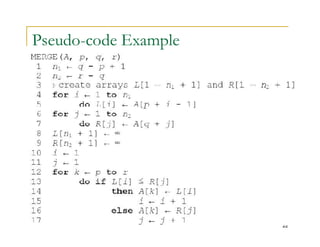The document introduces algorithms and their role in computing. It defines algorithms as tools for solving well-specified computational problems. Algorithms must be correct, producing the appropriate output for each input, and efficient, using as little resources as possible. Examples of algorithms provided include sorting a list alphabetically and determining if a number is prime. Pseudo-code is used to describe algorithms in a language-independent way.

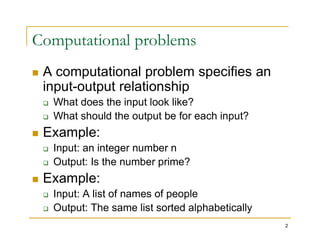
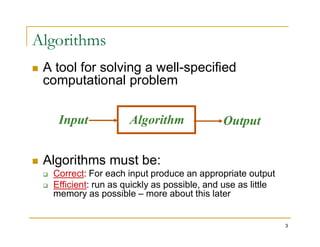
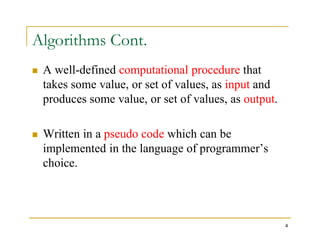


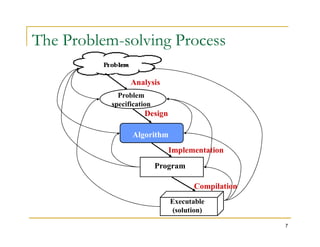
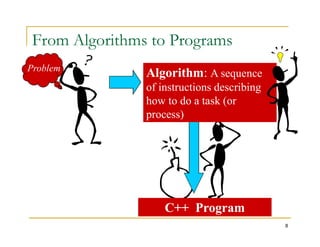
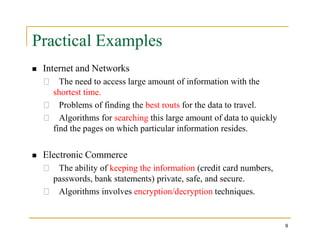

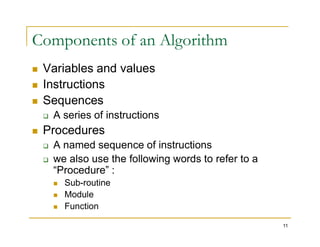
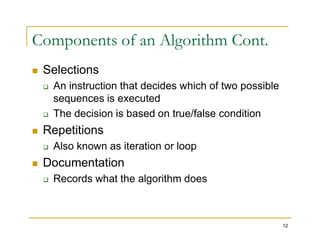
![A Simple Algorithm
INPUT: a sequence of n numbers
T is an array of n elements
T[1], T[2], …, T[n]
OUTPUT: the smallest number among them
min = T[1]
13
Performance of this algorithm is a function of n
min = T[1]
for i = 2 to n do
{
if T[i] < min
min = T[i]
}
Output min](https://image.slidesharecdn.com/unit1a-240221222352-3c1debec/85/CP4151-Advanced-data-structures-and-algorithms-13-320.jpg)
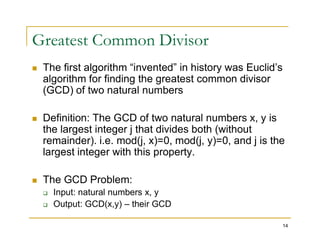
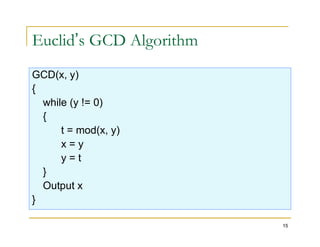
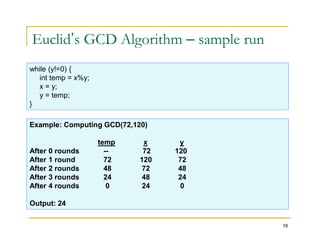
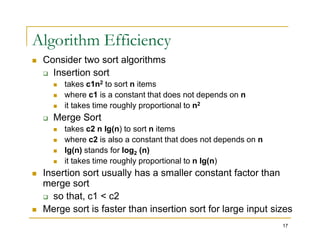
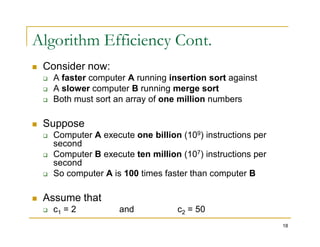


![Pseudo-code conventions
Variables ( such as i, j, and key) are local to the given procedure.
We shall not us global variables without explicit indication.
Array elements are accessed by specifying the array name
followed by the index in square brackets. For example, A[i]
indicates the ith element of the array A. The notation “…" is used
to indicate a range of values within an array. Thus, A[1…j]
21
to indicate a range of values within an array. Thus, A[1…j]
indicates the sub-array of A consisting of the j elements A[1],
A[2], . . . , A[j].
A particular attributes is accessed using the attributes name
followed by the name of its object in square brackets.
For example, we treat an array as an object with the attribute
length indicating how many elements it contains( length[A]).](https://image.slidesharecdn.com/unit1a-240221222352-3c1debec/85/CP4151-Advanced-data-structures-and-algorithms-21-320.jpg)
